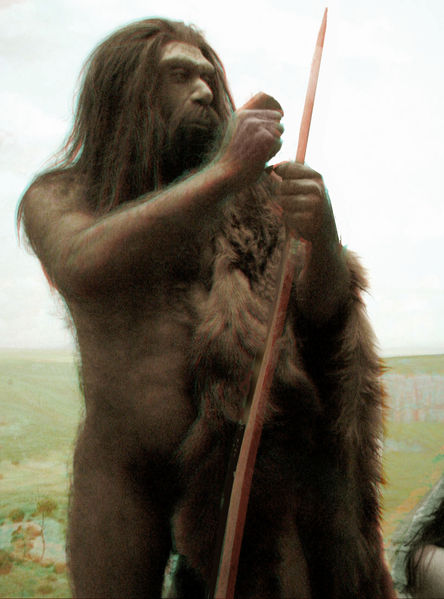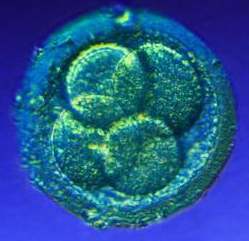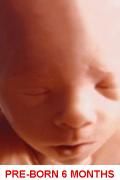I. Human Evolution
A. Origin of Life
1. Primitive Earth
2. Small Organic Molecules
3. Macromolecules
4. Protocell
5. True Cell
B. Biological Evolution
1. Common Descent
2. Intelligent Design
3. Natural Selection
C. Classification of Humans
1. DNA DAta
2. Humans are Primates
3. Comparison of Human Skeleton to Chimpanzee Skeleton
D. Evolution of Hominids
1. First Hominids
2. Hominid Features
3. Earliest Fossil Hominids
4. Evolution of Australopithecines
5. Southern Africa
6. Eastern Africa
E. Evolution of Humans
1. Early Homo
2. Evolution of Modern Humans
3. Neandertals
4. Cro-Magnons
5. Human Variation
II. Global Ecology and Human Interferences
A. Nature of Ecosystems
1. Ecosystems
2. Biotic Components of an Ecosystem
3. Energy Flow and Chemical Cycling
B. Energy Flow
1. Trophic Levels
2. Ecological Pyramids
C. Global Biogeochemical Cycles
1. Water Cycle
2. Carbon Cycle
3. Nitrogen Cycle
4. Phosphorus Cycle
III. Human Population, Planetary Resources, and Conservation
A. Human Population Growth
1. MDCs VS LDCs
B. Human Use of Resources and Pollution
1. Land
2. Water
3. Food
4. Energy
5. Minerals
C. Biodiversity
1. Loss of biodiversity
2. Direct Value of biodiversity
3. Indirect Value of biodiversity
D. Working Toward a Sustainable Society
1. Today's Unsustainable Society
2. Characteristic of a Sustainable Society
3. Assessing Economic Well-Being and Quality of Life
One of the fundamental principles of biology states that all living things are made up of cells and that every cell comes from a preexisting cell. What produced the first cell? The sun and the planets probably formed from aggregates of dust particles and debris. The solar system was in place at 4.6 BYA. The Earth's mass is enough that the gravitational field has an atmosphere.

early Earth's atmosphere was most likely formed from gases escaping from volcanoes. It would mostly have contained water, nitrogen, carbon dioxide, and minimal amounts of hydrogen and carbon monoxide. The early Earth was extremely hot. As the Earth cooled the water vapor condensed to liquid and rain began to fall. It fell in such great quantities that the oceans were produced.
The rain washed other gases into the oceans.

The energy sources of primitive Earth would have included volcanoes, meteorites, lightening, radioactive isotopes, and ultraviolet radiation. This may have caused the primitive gases to react with each other and produce small organic compounds such as amino acids and nucleotides.
These molecules then likely joined together to become organic macromolecules. There are two different hypotheses that concern this stage of the origin of life. One is the RNA first hypothesis. This one suggests that only RNA was needed to progress toward the formation of the first cell. It was found that RNA can be both a substrate and an enzyme during RNA processing. The RNA is the enzyme. It is supposed that RNA could have carried out the processes of life that are commonly associated with DNA. The other hypothesis is known as the protein first hypothesis. Sidney Fox suggests that amino acids collected in puddles and the heat of the sun caused them to form proteinoids.
Cells have lipid protein membranes. If there are lipids available to microspheres the two become associated. This is how a protocell would have come into existence. A protocell would have been able to use the organic molecules in the ocean as food. A protocell would have been a heterotroph, or an organism that takes in preformed food.

A true cell is able to reproduce. DNA replicates before cell division occurs. The first true cells must have been prokaryotic cells, lacking a nucleus. Later eukaryotic cells would have evolved. Biological evolution is the process in which a species changes over the course of time. Descent from the original cell explains why all living things have a common cellular structure. Adaptation is a characteristic enabling an organism to survive and reproduce in the environment. Charles Darwin first formulated the widely accepted theory of evolution. At the age of 22 he sailed around the world on the HMS Beagle. The ship sailed the tropics of the Southern Hemisphere, and this is where Darwin began to realize that life forms change over time and from place to place.

The best evidence for evolution are fossils, or the actual remains of species that lived on Earth at least 10,000 years ago. Most fossils are found in sedimentary rock. Sediment becomes stratum, or a recognizable layer. Any stratum is older than the one above it, and younger than the one below it. When an organism dies, scavengers consume the soft parts. The fossils only consist of hard parts such as shells, bones, or teeth. More and more fossils have been found because paleontologists have been out searching for them.
The fossil record is the history of life that has been recorded by fossils. Paleontology is the science of discovering the fossil record. Darwin used fossils to formulate his theory of evolution. The fossil record is complete enough to show us that life has progressed from simple to complex. Unicellular prokaryotes are the first signs of life in the fossil record. These were followed by unicellular eukaryotes, then multicellular eukaryote. From these, fish evolved before plants and animals. Dinosaurs are directly linked to birds, but indirectly linked to mammals.
Transitional fossils have characteristics of two different groups. This helps tell us who is related to whom and how evolution occurred.

Archaeopteryx fossils are in between reptiles and birds. Whales have terrestrial ancestors. The origin of mammals has been well documented. The synapsids were mammal like reptiles. Their descendants were wolflike and bearlike predators along with piglike herbivores. The earliest true mammals were shrew size creatures.
Biogeography is the study of the distribution of plants and animals in different places throughout the world. This is consistent with the hypothesis that says that life forms evolved in particular places and then might have spread out. Islands have many unique species of animals and plants. This is because those plants and animals had no means of crossing the water to reach other lands.
Anatomical evidence is also used to help support evolution. Structures that are inherited from a common ancestor and are anatomically similar are called homologous. Analogous structures serve the same function, but do not share a common ancestry.
Almost all living organisms share the same biochemical molecules. Evolutionists have found many developmental genes shared in animals ranging from worms to humans.
The theory of evolution is scientific, and has been supported by scientific experiments and observations. Groups of people think that the teaching of ideas that run contrary to evolution should be taught in schools. This is Intelligent Design, or the thought that life could not have begun without the involvement of an intelligent agent.

Natural selection is a mechanism of adaptation discovered by Darwin. This is when a species becomes suited to its environment. The elements critical to the natural selection process include variation, competition for limited resources, and adaptation. Members of a species vary in physical ways which can be passed down generations. Even though each individual could produce many descendants, the number stays the same because resources are limited and competition for those resources results in unequal reproduction. Members of a population with advantageous traits are more likely to capture more of the resources and are more likely to reproduce, passing on their traits.
The binomial name of an organism gives its genus and species. The DNA coding for rRNA changes during evolution.
Primates are adapted to arboreal life, or living in trees. They have mobile limbs, grasping hands, a flattened face, binocular vision, a large complex brain, and a reduced reproductive rate. The order Primates has two suborders : prosimians and anthropoids. Prosimians include lemurs, tarsiers, and lorises. Anthropoids include monkeys, apes, and humans.
Primate limbs are mobile and hands and feet have five digits on each. Many primates have an opposable big toe and thumb. The opposable thumb makes it easy for a primate to reach out and bring food to the mouth. Binocular vision allows for depth perception. The brain is involved in controlling and processing information received from the hands and the thumb resulting in good eye hand coordination.
The human skeleton has many similarities to the chimpanzee skeleton. There are some differences however. The human spine exits from the center, and the ape spine exits from the rear of the skull. The human spine is S-shaped, while the ape spine has only a slight curve. The human pelvis is bowl shaped while the ape pelvis is longer and narrower. The human femurs angle inward, and ape femurs angle out. The human knee can also support more weight than an ape knee.

An evolutionary tree can be constructed once biologists have studied the characteristics of a group of organisms. Biologists have been unable to agree on which extinct form is the first hominid. Humans are on the hominid branch of the evolutionary tree. Lineage, or lines of descent, diverge from a common ancestor, the genes and proteins of the two lineages are almost identical. MAny genetic changes are neutral and these changes can be used as a molecular clock to indicate when the two groups diverged from each other. It is estimated that hominids split from the ape line of descent 7MYA.
One feature that is used to determine if a fossil is a hominid is bipedal posture, or walking on two feet. Two other important hominid features are the shape of the face and the size of the brain. Human features didn't evolve at the same rate.
The oldest hominid fossil was dated at 7 MYA. It was found in Chad and is called Sahelanthropus tchadensis. It was a skull that had smaller canines and thicker tooth enamel than an ape. Another fossil found 6MYA, orrorin tugenensis was found in eastern Africa and is also thought to be another early hominid.
The hominid line of descent really began with the australopithecines which evolved and diversified in Africa. Some were slender and some were robust. Their structures most likely related to their diets.
The first to be discovered was found in southern Africa in the 1920s by Raymond Dart. Dated 2.8 MYA, it was named Australopithecus africanus and was a gracile type. A robustus dated from 2 to 1.5 MYA and is also from southern Africa. Limb anatomy suggests that both of these walked upright. They also had fairly large brain sizes, making them a possible ancestral candidate for early Homo.
More than 20 years ago, nearly 250 fossils of a hominid called A. afatensis were unearthed.

most famous one, known as Lucy, was evidence to support standing upright and walking bipedally. Australopithecines were apelike above the waist and humanlike below the waist. This shows that humanlike characteristics did not all evolve at the same time. Mosaic evolution is when different body parts change at different rates and at different times.
Fossils are assigned to the genus Homo if the brain size is 600cm3 or greater, and if the jaw and teeth resemble those of humans, and if tool use is evident. Homo habilis may be ancestral to modern humans and is dated sometime between 2.0 and 1.9 MYA. Some of these fossils had brain sizes of 775 cm3. The cheek teeth were small, and it is likely that these members of the genus Homo were omnivores. Bones at their campsites show cut marks, meaning that tools were used to strip them of meat.
Culture has to do with human behavior and products and it depends upon the capacity to speak and transmit knowledge. Homo erectus fossils are found in Africa, Asia, and Europe. These are dated between 1.0 and 0.3 MYA. H. erectus had a larger brain and a flatter face than H. habilis. H. Erecturs was the first hominid to use fire.
The multiregional continuity hypothesis states that Homo sapiens evolved in several different locations. Opponents of this theory suggest the Out of Africa theory which says that H,. sapiens evolved only in Africa and then migrated to other areas.
Neandertals were dated about 200,000 years BP. The neandertal brain was slightly larger than H. sapiens. The Neandertals were culturally advanced. Many of them lived in caves, but some living in the open possibly built houses. They manufactured many different types of tools.

Cro-Magnons are the oldest fossils labeled as homo sapiens. They made advanced compound stone tools and may have been the first to throw spears. They are possibly the first to have a language. Their culture also included art and they sculpted figurines out of reindeer bones and antlers.
Humans have always been widely spread about the globe. Human variations are due to adaptations to local conditions. The differences between human populations are consistent with them having a common ancestor.
A biosphere is where organisms are found on our planet from the atmosphere to the depths of the oceans. The entire biosphere is a giant ecosystem. The ecosystem is a place where organisms interact among themselves and with the environment.
There are several distinctive major types of terrestrial ecosystems. These are called biomes. Temperature and rainfall are what define the biomes. Nonliving components of an ecosystem are called abiotic components. Living components are biotic. Some of the populations are autotrophs and some are heterotrophs. Autotrophs require inorganic nutrients and an outside energy source to provide organic nutrients for their own use. They are called producers because they produce food. Heterotrophs are consumers - they need a source of organic nutrients. Herbivores consume plants, carnivores consume meat, and omnivores feed on both. Detritus feeders feed on decomposing particles of organic matter.
A niche is the role of an organism in an ecosystem. This includes how it gets its food, what eats it, and how it interacts with other populations within its own community.

cannot exist without solar energy. Chemicals cycle when inorganic nutrients return to the producers. Only some of the organic nutrients made by autotrophs are passed on to heterotrophs. Only some of the nutrients taken in by heterotrophs are available to high level consumers. Metabolic wastes are excreted as urine. Wastes are nutrients made available to decomposers. Chemicals complete the cycle of an ecosystem when the inorganic chemicals become absorbed by producers from the atmosphere or the soil.
The paths of energy flow are represented by a food web that describes trophic, or feeding, relationships. Diagrams showing only one path of energy flow are known as food chains.
Only about ten percent of the energy of one trophic level is available to the next level. Energy losses result in pyramids. Pyramids of biomass eliminate size because biomass is the number of organisms multiplied by the weight of organic matter.
A biogeochemical cycle is the pathway by which chemicals circulate through ecosystems. They can be gaseous or sedimentary.

The water cycle begins with evaporation. This is when the sun causes freshwater to evaporate from the sea, leaving salt behind. Vaporized freshwater rises, condenses, and then falls as rain, snow, or another form of precipitation. Water can also evaporate from land and plants. Gravity returns all freshwater eventually to the sea. Runoff is water that flows into stream, lakes, wetlands, or the ocean. Humans interfere with the water cycle because they withdraw water from aquifers, they clear vegetation from land, and they interfere with natural purifying processes.
Carbon dioxide is the exchange pool for the carbon cycle. Organisms in both terrestrial and aquatic ecosystems exchange carbon dioxide with the atmosphere. Plants on land take it in from the air, and incorporate carbon into nutrients used by heterotrophs and autotrophs through the process of photosynthesis. When organisms respire, they return carbon to the atmosphere as carbon dioxide. Carbon dioxide from the air combines with water and produces bicarbonate ion which is a source of carbon for algae. The amount of bicarbonate in the water is equilibrium with the amount in the air. Living and dead organisms contain organic carbon. More carbon dioxide is being deposited in the atmosphere than is being removed. Carbon dioxide is being emitted due to human activities. This along with nitrous oxide and methane are known as greenhouse gasses because they allow solar radiation to pass through but don't really allow the escape of heat back into space. This contributes to global warming.
Nitrogen makes up 78% of the atmosphere. Plants do not make use of nitrogen, therefore it is a nutrient that can limit the amount of growth in an ecosystem. Nitrogen fixation occurs when nitrogen is converted to ammonium, which plants are able to use. Plants can also use nitrates as a form of nitrogen. The production of nitrates is called nitrification. Ammonium in the soil is converted to nitrate by soil bacteria. Nitrate producing bacteria convert nitrite to nitrate. During assimilation, plants take up ammonia and nitrate from the soil to produce proteins and nucleic acids. Denitrification is when nitrate is converted back into nitrogen gas. Human activities alter the transfer rates by producing fertilizers. Acid deposition occurs when nitrogen oxides and sulfur dioxide enter the atmosphere from the burning of fossil fuels.
During the phosphorus cycle, phosphorous trapped in the ocean moves onto land. On land the slow weathering of rocks places phosphate ions in the soil. Some of this becomes available to plants. Animals eat the producers and incorporate phosphate into teeth, bones, and shells. Death and decay of all organisms make phosphate ions available to producers again. human beings increase the supply of phosphate by mining. Overenrichment of waterways is called cultural eutrophication. Biological magnification is when a food change becomes more and more concentrated because the phosphate ions remain in the body and are not excreted. During the last 50 years, humans have polluted the seas to where many species are close to extinction.

Before the year 1750, the growth of the human population was slow. After that, as more reproducing humans were added, growth increased and the curve sloped steeply, indicating what is known as exponential growth. The growth rate of the population is determined by the difference between the number of people born each year and the number of people that die per year. In the wild, exponential growth means that a population is at biotic potential - the maximum growth rate under ideal conditions. The maximum population that the environment can support is called the carrying capacity.
The more developed countries have modest population growth, and the less developed countries show dramatic population growth. The LDCs experience such population momentum because they have a greater number of women entering reproductive years than older women leaving them. The three age groups of population are prereproductive, reproductive, and postreproductive. Most MDCs have stable age structure diagrams and their populations should remain the same if couples have fewer than two children.
A resource is anything from the biotic or abiotic environment that helps human beings meet their certain basic needs. Some resources are nonrenewable, meaning that they are limited in supply. These include amount of land, fossil fuels, and minerals. Renewable resources can be replenished naturally such as water. Pollution is an alteration of the environment in a negative way.
All humans need a place to live. There are more than 32 people for each square km of land worldwide. Forty percent of the population lives within 100 km of a coastline. Unfortunately, this leads to beach erosion and loss of habitat for marine organisms. Forty percent of the Earth's lands are deserts and land near it is in danger of becoming unable to support human life if humans don't manage it properly. Desertification is the conversion of semiarid land to desert conditions. Deforestation, or the removal of trees, allows humans to live where forests once stood. Unfortunately, this makes land subject to desertification.
Most freshwater is used by industry and agriculture. Seventy percent of all water is used to irrigate crops. In the MDCs, in domestic use, more water is used for bathing, flushing toilets, and watering lawns than is used for drinking and cooking. Dams are one way to replenish the supply of freshwater, but they have drawbacks as well. The salt left behind by evaporation increases salinity can make a river's water unusable downstream. Aquifers are reservoirs found just below the surface. This accumulates from rain that fell in far off regions. By 2025, two thirds of the world population may be living in countries facing serious water shortages.
Food comes from three activities : growing crops, raising animals, and fishing the seas. Some of the processes used to obtain these resources are harmful to the earth such as planting genetic varieties, heavy use of fertilizers and pesticides, generous irrigation, and excessive fuel consumption. Land used for farming is being degraded worldwide.
About 75% of the world's energy supply comes from fossil fuels, and 6% from nuclear power. Fossil fuels such as oil, natural gas, and coal come from the compressed remains of plants and animals that died many thousand years ago. Renewable types of energy include hydropower, geothermal, wind, and solar. Hydropower converts the energy of falling water into electricity. Geothermal energy happens when elements such as uranium, thorium, radium, and plutonium undergo radioactive decay below the Earth's surface and heat the surrounding rocks. Wind power is exactly what is sounds like. And solar energy is diffuse energy that must be collected, converted to another form, and stored.
Minerals are nonrenewable materials in the Earth's crust that can be mined. Some of them can be dangerous to human health such as lead, mercury, arsenic, and copper. The consumption of these minerals leads to hazardous wastes.
Biodiversity is the variety of life on earth. There are several factors that cause a loss of biodiversity, or extinction. Habitat loss, or the loss of habitable land, is one of the main causes. Alien species happen when humans introduce foreign species into new ecosystems and they take over the local species. Pollution issues such as acid deposition, global warming, ozone depletion, and synthetic organic chemicals also create a loss of biodiversity. Biodiversity is very positive and has many direct values to human well being such as medicinal, agricultural, and consumptive use values. There are also indirect values such as waste disposal, provision of freshwater, prevention of soil erosion, biogeochemical cycles, regulation of climate, and ecotourism.
A sustainable society is a society that would always be able to provide the same amount of foods and services as it does currently, at the same time preserving biodiversity.
Images are from these sites


































